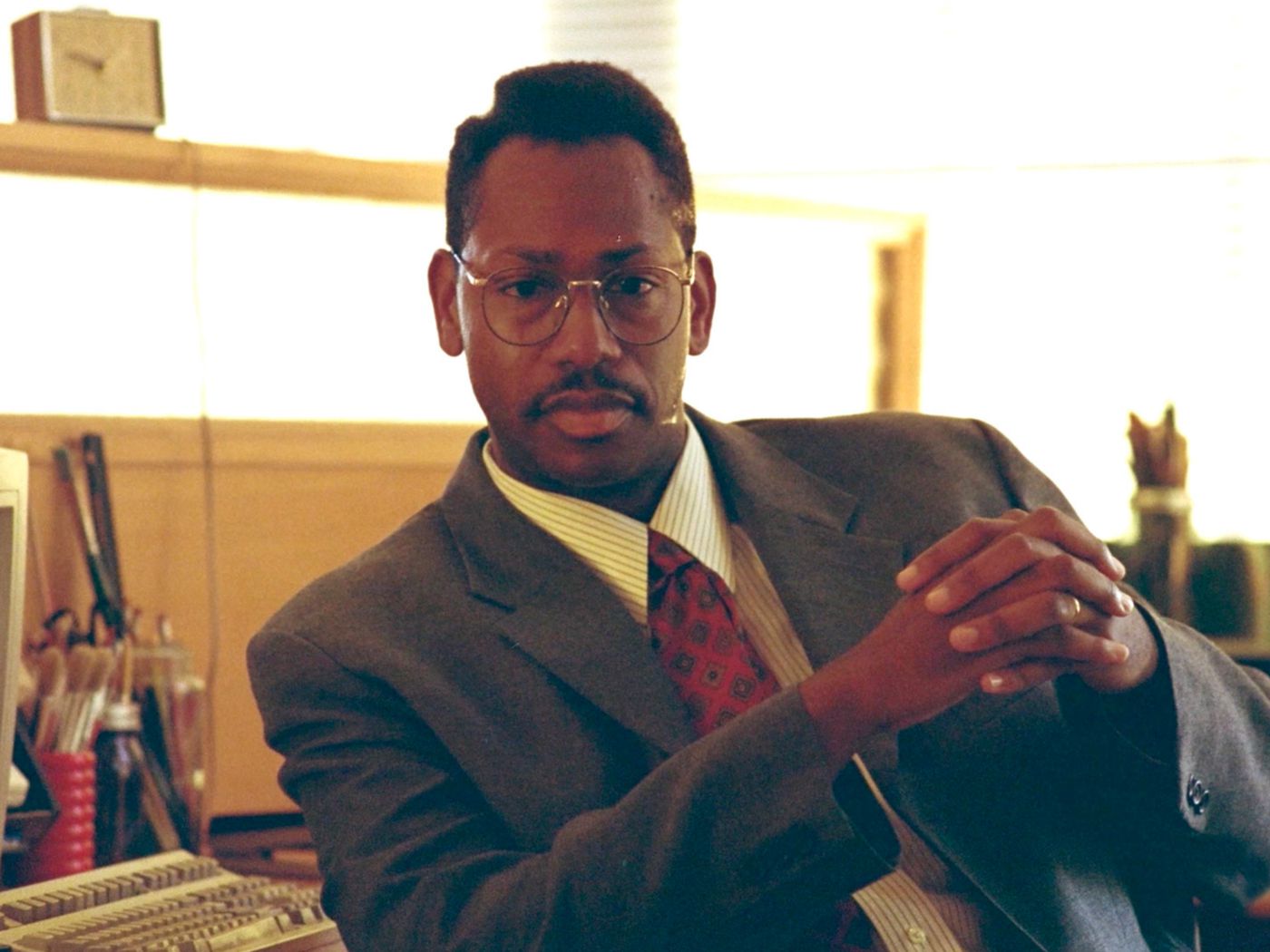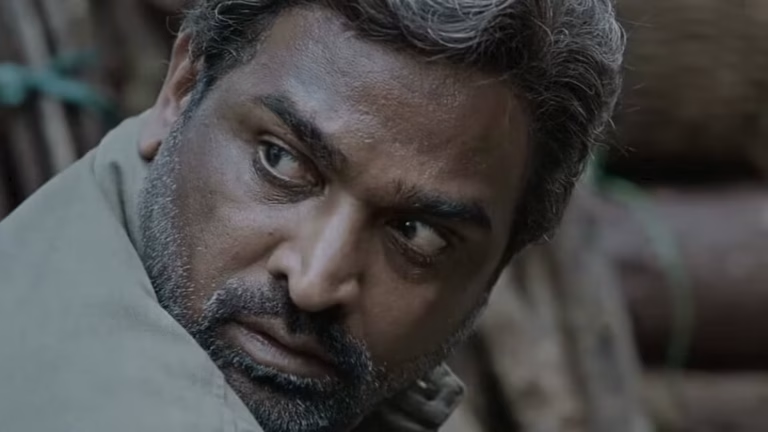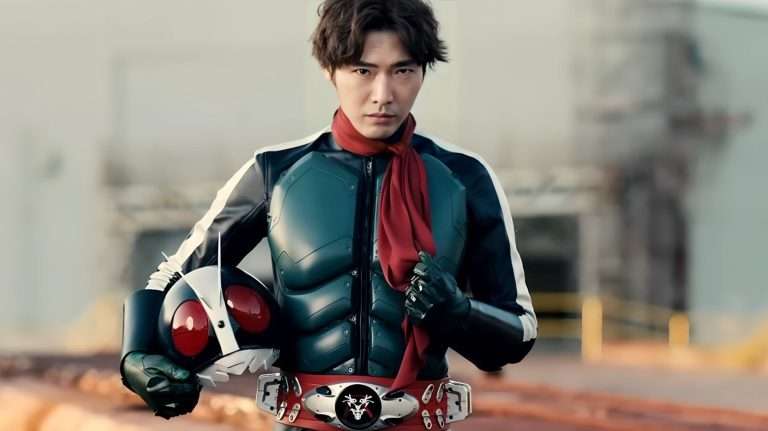Atlanta (Season 4), Episode 8 Recap & Ending, Explained: Donald Glover has seamlessly transversed different creative routes throughout the FX series – ‘Atlanta’. With the recent episode, he introduces a mockumentary format and describes the close relationship black people have with the character of Goofy from the Disney universe. The first season of Atlanta introduced a fictional network called B. A. N. (Black American Network), where Alfred’s character has a heated political debate about the lyrics of one of his tracks. The recent episode appears on the same network, and it is one of those standalone episodes where none of the recurring, lead characters appears throughout the duration. The surreal comedy TV series is streaming on Hulu.
Atlanta (Season 4) Episode 8 Recap:
The Goof Who Sat by the Door
The episode titled ‘The Goof Who Sat by the Door’ is directed by Donald Glover and is written by him along with Francesca Sloane and Karen Joseph Adcock. It begins with a note stating that all the details in the documentary have been fact-checked. Then journalist Jenna Wortham narrates the incidents from the 1990s when Disney was creating box office records. At the same time, Los Angeles was going through tumultuous times due to the police officers getting free from all the charges for senselessly beating Rodney G. King. While that is a cultural milestone, she starts narrating another milestone where a black animator was hired as the CEO of Disney.
The episode then follows the journey of Tom Washington (played by Eric Berryman). His mother, Evelyn Washington (played by Ann Nesby) tells the stories from when he was young. He was named after the famous white singer at the time, named Tom Jones, whose songs he used to dance to. His cousin – Philip Washington, tells how much Tom loved comic books and shares how he used to draw them every chance he could get. As a kid, he was obsessed with a cartoon called Astro boy. While Philip found it boring, Tom loved it. He wondered if Astro boy could come and save them, from everything.
Tom probably said it because of the unfair world around him which always bullied him for being too white for having interests unlike what is considered cool in the black community. Evelyn used to console him, saying how this too shall pass. When he became older, he went to Savannah College of Art and Design, where his creative pursuit finally started taking shape. Even his application along with a creative flipbook impressed the panel. After the admission, he started gravitating toward Art Babbitt and the character he created in the Disney universe called Goofy.
Tom started seeing himself in Goofy, and taking notes on how the character was envisioned, he created a series of his own, called – ‘Goofy, please!’ Professor Mark Dillard was in awe of his otherworldly creativity. While his cousin and other black peers made fun of him for endearing Goofy, he kept with his foray into the animation world – also creating an emotional film called ‘The Lil’ Prince’, revisioning the legendary music personality of Prince. It came at the time of his father’s death, making it either the saddest or the funniest thing the audience saw. The same film got him a job at the Disney studios as one of their animators.
While Tom was slowly rising up the ranks in the studio, the uprisings started to happen in L.A., which shook him to the core. He wanted to participate in the riots, but his mother stopped him advising him rather use his pencil and paper to speak about it. After the success of their film- Beauty and the Beast, followed by the loss of some of their high-level executives, the Disney board voted for Tom as their new CEO. There was a goof-up by the committee who thought they were voting for a white man named Thompson but ended up choosing a black person named Thomas. Of course, a table full of white folks did not like the idea of a black person at the helm.
When Tom talked about being CEO of Disney, his cousin ridiculed him. But after seeing everyone respecting him in the studio, he understood it to be the truth. He also got married around that time, to a woman named Anna (played by Sherry Richards). During a screening, he felt uneasy seeing Mickey mouse putting a lease over Pluto’s head. It did not make sense to see Goofy, letting Mickey do that to one of his own kind (the other dog). While this nuance went unnoticed before, he found it absurd. He sunk his teeth deeper into the studio project, trying to perfect the character movements while also noting the systemic factors that were troubling Goofy’s character the way they did to black people.
While the media was filled at the time with portrayals of black people as either queerphobic or hypermasculine, Goofy humanized them in its own manner, while telling a story of a family from a humble background. Tom’s son – Maxwell (played by Maurice P. Kerry) sees the parts of Goofy’s story emblematic of Tom’s philosophy of black exceptionalism, of going beyond what the people expect you to be like. He also saw some of his childhood memories reflected in the cartoon world. So many plot details from the movie conveyed subtext close to a black American person’s experience.

Tom kept pursuing the utmost authenticity for how Black people moved, spoke and behaved. The animators worked tirelessly to bring authenticity and his vision to their sketchpads. Meanwhile, several Hollywood biggies hung out in his office as if it was absolutely normal. Based on Brian McKnight’s suggestion, Tom took on a young black musician instead of Bryan Adams. While that was one side of the coin, he also struggled while trying his best to make the world of animation look cool and to be considered black.
Over the period, the pressure started taking a toll on him, making him meaner and bringing his anger back home. Neither Anna nor Maxwell had seen this side of his until then, and it frightened them. His colleague also saw a gun in his briefcase, which showed the darker side he had leaned into by then. After that, he got a divorce from Anna, leading to his downfall. The Disney executives started questioning him, for letting the skyrocketing budgets for A Goofy Movie. At the meeting, he started manically laughing – almost the way Goofy did. His colleague saw it as him not understanding the difference between himself and Goofy.
Atlanta (Season 4), Episode 8 Ending Explained:
Did ‘A Goofy Movie’ align with Tom’s vision?
Due to this sad state of affairs, the Dinsey executives made their best efforts to fire Tom effective immediately. They offered to buy him out of his contract with a big amount, which the white executives claim to be in millions and his brother recalls being in thousands. At the time, he started getting paranoid and started tightening his security with people he had acquired by strengthening his bond with deals with people from his community. He died not long after the fiasco, which some of the producers still consider not to be an accident.
The reason for it is the last known footage of Tom, speaking directly to the camera. You would rather consider him as rambling incoherently out of the toll the pressure took on him – the pressure for representing his culture as authentically as he could. Since people didn’t speak about mental health or depression back then, it never come into a discussion about him at the time. However, his sobbing was indicative of the same struggles. His son and mother reminisce about his fond memories and note how similar A Goofy Movie is to their life together.
The executives released the movie, even when it didn’t align with his vision. They inserted a character of bigfoot when Tom wanted the father-son duo to discover a throne in the thrift store and have a moment of reclaiming that position. What the white folks rather did was made fun of the ambitious fantasy, by adding Bigfoot instead.
While every viewer of this episode would have probably realized that Tom did not exist in reality, the fantastic post-production for the episode makes it a little difficult to take it entirely as a farce. The relation and closeness that black people have felt with Goofy’s character and with ‘A Goofy Movie’ have been discussed in the past. This episode goes in depth in noting why.
Besides, the entire mockumentary episode also feels close to the heart of the show’s creator – Donald Glover, who had to make something considered a conventionally black art, to be accepted by the community. So, Tom’s struggle is almost his own struggle of acceptance and the stress that Tom felt in trying to talk about everything black and to speak with utmost authenticity is also what Donald goes through, in creating this series, or in creating almost anything that he does.
P. S. An interesting trivia for those who follow the series religiously and have seen the previous season – In the episode, where Alfred’s character goes through a nightmarish reality while wearing a ‘goofy’ hat, we literally see ‘The Goof Who Sat by the Door’, twice in the cyclical narrative – which was symbolic of Al’s mental state while processing his feelings about relevance and irrelevance at the time.




![Cowboy Bebop [2021] Netflix Review: A decent Adaptation of a seminal anime anchored by strong lead performances](https://79468c92.delivery.rocketcdn.me/wp-content/uploads/2021/11/Cowboy-Bebop-768x512.jpg)
![London Files [2022] ‘Voot’ Review: Begins With Absolute Chaos, Ends With Absolute Silence](https://79468c92.delivery.rocketcdn.me/wp-content/uploads/2022/04/London-Files-Voot-2022-768x432.webp)

